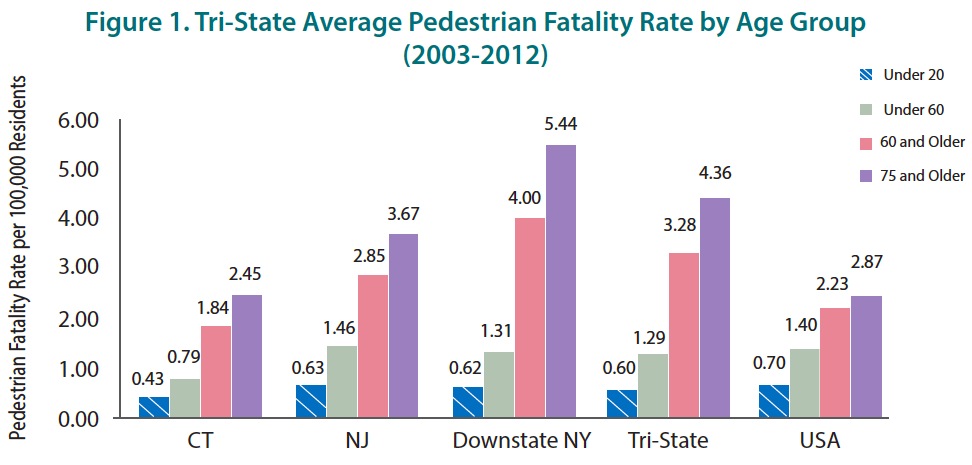
TRI-STATE TRANSPORTATION CAMPAIGN
TSTC’s analysis clearly shows that across the tri-state and in the U.S., pedestrians 60 and older are at higher risk of dying from a car collision than their younger neighbors.
Why is this? A larger proportion of older adults may choose not to drive or may be unable to drive than younger adults, leaving a great number of older adults reliant on walking and taking transit. Also, as AARP explains, “With advanced age, bone density declines, making serious injury or death more likely if one is hit by a car.[. . .] Falls among people 65 and older are an equally significant public health concern and cost more than $19 billion annually in total direct medical costs. Inadequate sidewalk maintenance increases older adults’ risk.”
Simple roadway improvements, such as clearly marked crosswalks, longer crossing signals and wider pedestrian islands can help older pedestrians cross the street. Well-maintained sidewalks also help older adults get around safely without a vehicle.
View this complete post...













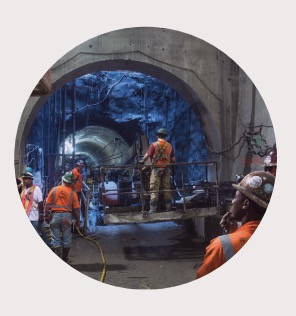
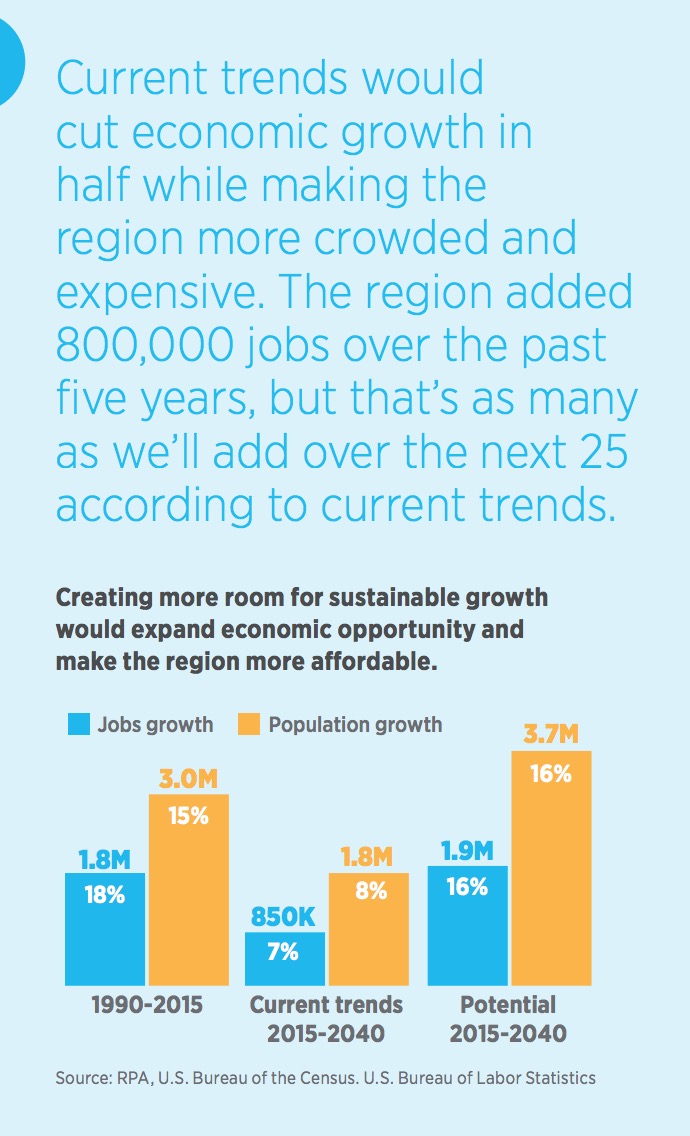
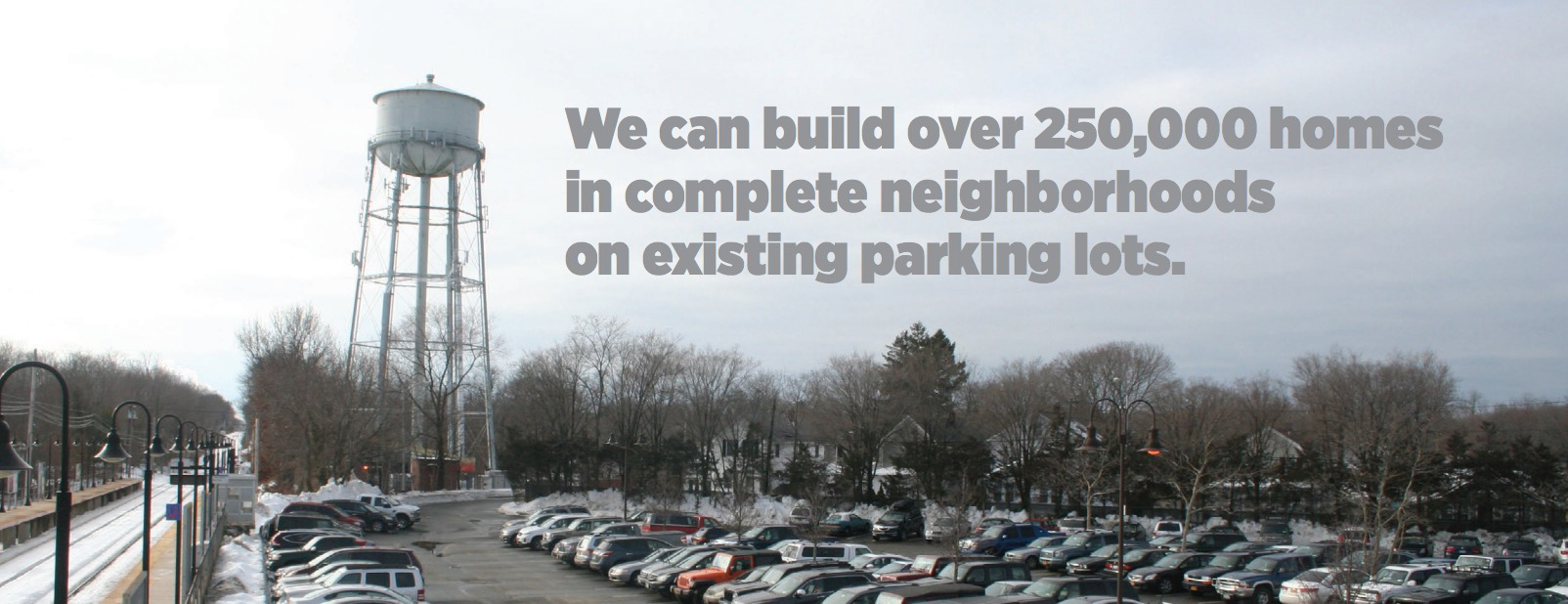
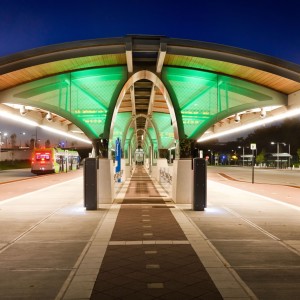

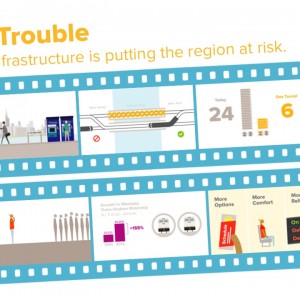
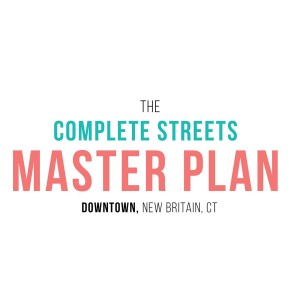
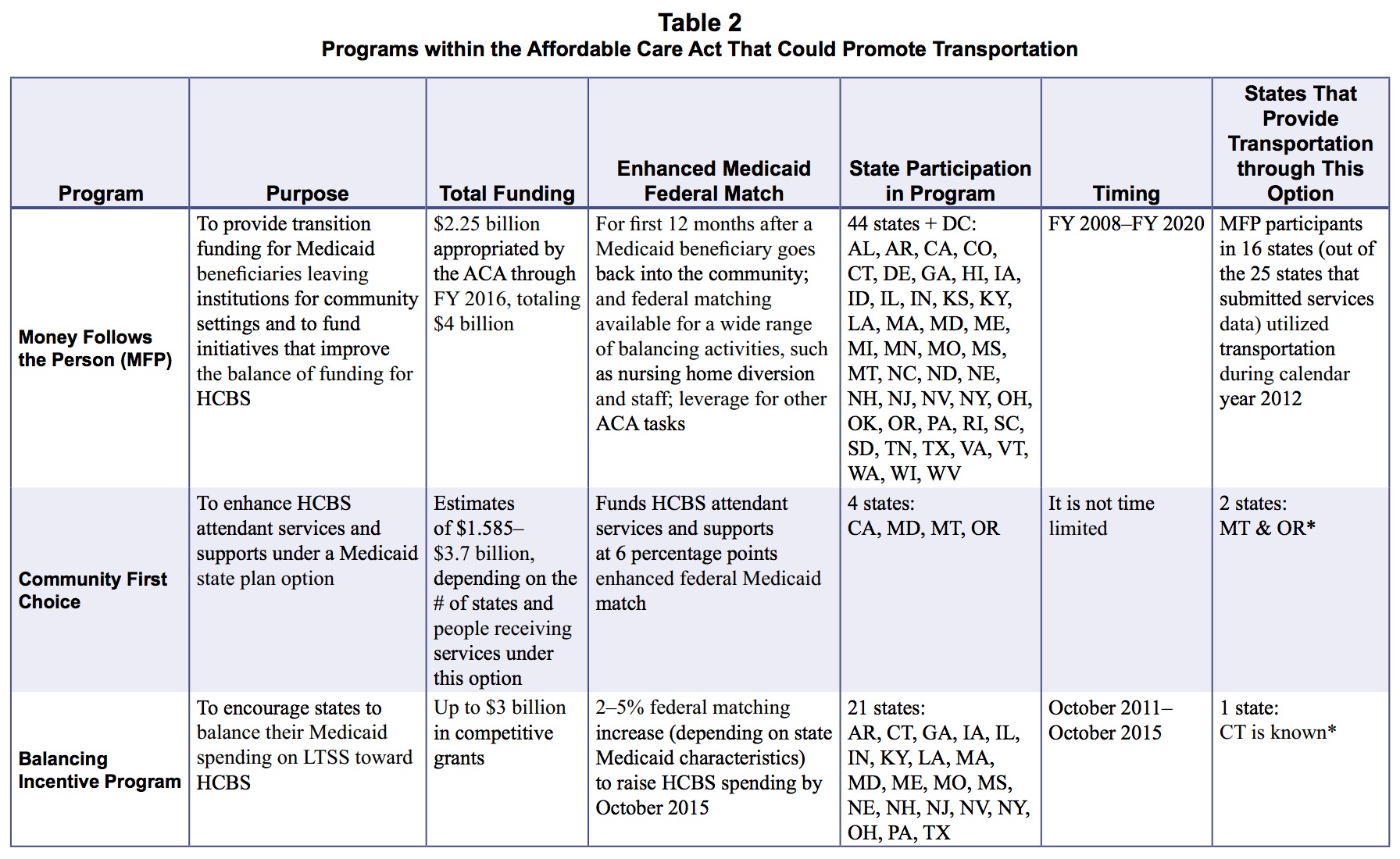


 RSS Feed
RSS Feed